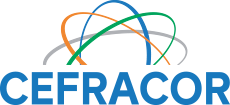Safety assessment shows that 14C is one of the main contributors to the annual dose from a cement-based deep-mined geological repository for low- and intermediate-level radioactive waste (L/ILW) in Switzerland. For current safety assessment it is assumed that 14C mainly contributes to the dose in its organic form, e.g. as 14C-bearing organic compounds, which are weakly retarded by the cementitious near field. A compilation of activity inventories revealed that 14C in L/ILW in Switzerland is mainly associated with irradiated steel (~75 %). 14C is produced according to the nuclear reaction 14N(n,p)14C by the activation of nitrogen impurities in stainless steel exposed to thermal neutron flux in nuclear reactors. Slow corrosion of irradiated steel will give rise to the release of 14C in the deep-mined geological repository. Although the inventory of 14C in the irradiated waste forms is well known, the chemical speciation of 14C in the cementitious environment upon release from irradiated steel is still poorly understood. The present study is aimed to fill this knowledge gap.
To this end a corrosion experiment with irradiated steel is currently being carried out. The experimental design includes a reactor system to perform the corrosion experiment with irradiated steel and analytical methods suitable to quantify the 14C-bearing compounds in the liquid and gas phases (Figure). Identification and quantification of these compounds is a particularly challenging task because the inventory of 14C in irradiated steel is low and the corrosion of steel in the alkaline conditions of a cement-based repository is very slow (few nm/year). Therefore, the concentrations of the 14C-bearing compounds in the liquid and gas phases are expected to be extremely low. Compound-specific radiocarbon analysis (CSRA) is the only suitable analytical technique to determine the compounds at the given concentration level.
CSRA for dissolved compounds, mainly carboxylic acids [1], is based on a combination of chromatographic separation of the individual 14C-containing carboxylic acids using high per-formance ion exclusion chromatography (HPIEC) and 14C quantification by accelerator mass spectrometry (AMS) [2] (Figure). The first results from the corrosion study with irradiated steel show that the analytical approach can be successfully applied to determine the total organic 14C content (TO14C) in solution. In addition, individual 14C-bearing compounds could be identified. The type of aqueous 14C-bearing compounds formed during the corrosion of irradiated steel was previously identified in corrosion studies with non-irradiated iron powders [3]. The concentration of the 14C-bearing compounds was found to increase very slowly with time in line with the low corrosion of stainless steel in alkaline conditions [4]. The CSRA method for 14C-bearing compounds will be presented including first results from the corrosion experiment with irradiated steel conducted in conditions relevant to the cementitious near field of an L/ILW repository.

References
[1] Wieland, E., Hummel W., Formation and stability of carbon-14 containing organic compounds in alkaline iron-water systems: Preliminary assessment based on a literature survey and thermodynamic modelling. Mineral. Mag. 79, 1275-1286 (2015).
[2] Cvetković, B.Z., Salazar, G., Kunz, D., Szidat, S., Wieland, E., Analysis of 14C-bearing compounds released by the corrosion of irradiated steel using accelerator mass spectrometry. Analyst 143, 3059-3067 (2018).
[3] Cvetković, B.Z., Rothardt, J., Büttler, A., Kunz, D., Schlotterbeck, G., Wieland, E., Formation of low molecular weight organic compounds during anoxic corrosion of zero-valent iron in alkaline conditions. Environ. Eng. Sci. 35, 437-461 (2018).
[4] Cvetković, B.Z., Salazar, G., Kunz, D., Tits, J., Szidat, S., Wieland, E., Quantification of dissolved organic 14C-containing compounds by accelerator mass spectrometry in a corrosion experiment with irradiated steel. Radiocarbon 60, 1657-1670.
Souhaitez-vous présenter une affiche ?corrosion, irradiated steel, carbon, compound-specific radiocarbon analysis
